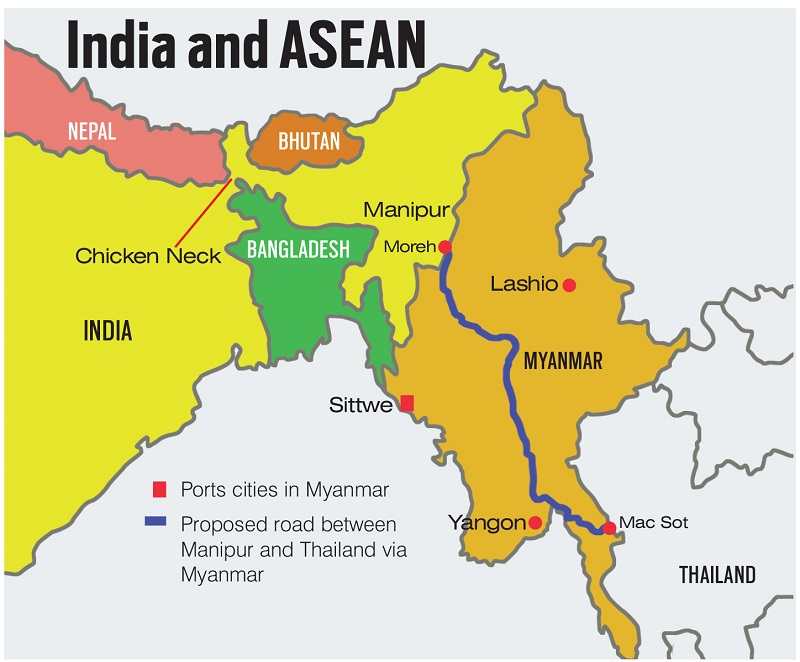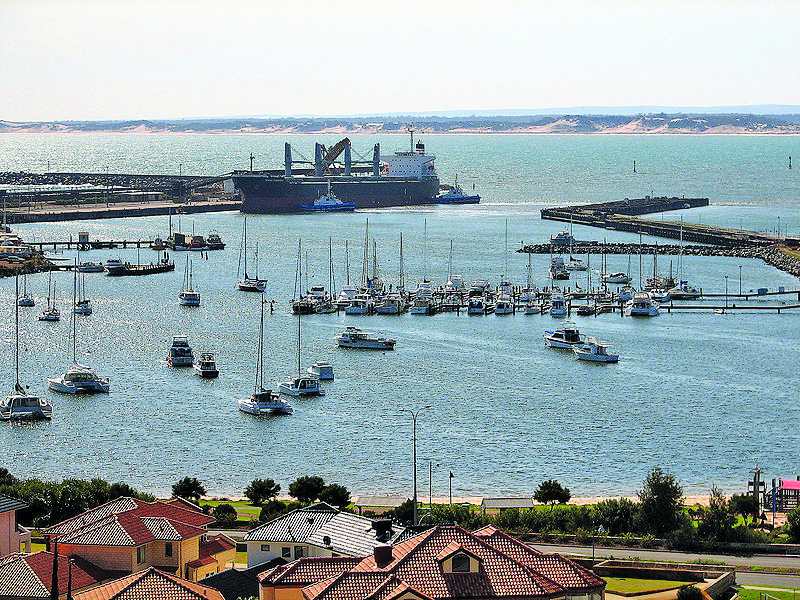
Prime Minister Modi’s forward-looking policy towards this region would be fruitful if ASEAN countries are brought closer via infrastructure projects leading to greater connectivity
~By Seema Guha
The North-east has heard this before. It’s a tantalising offer which has been hanging in the air for over 30 years. Narendra Modi is the fourth Indian prime minister to talk of making the North-east a “gateway to South Asia’’.
“My emphasis on North-east is because a balanced development of the region did not take place after so many years of independence. Now, the central government, for the last three years, is making efforts to achieve balanced development of North-east through all its resources…. These efforts will help to make the North-east a gateway to South East Asia,” said the prime Minister recently. He was referring to India’s “Act East Policy”.
CROWD MANIPULATION
Amar Yumnam, professor in Manipur’s central university, said: “We have heard this many times before. Much of this is just talk and more talk.’’ Asked if he felt that Modi, who is known to get things done quickly unlike other PMs, would actually deliver, Yumnam said: “He has been in the government for the last three years. I find no change. The BJP is good at crowd manipulation and making a lot of noise about themselves. Beyond that, I see little change.’’

Yumnam’s cynicism was echoed by others too who said they would wait to see the results. All governments make tall promises but deliver nothing. Yumnam also believes that connectivity makes little sense if China, the largest economy in Asia and the second largest in the world, is left out.
Like many other policies adopted by the Modi government, the Look East Policy, now rebranded as Act East, is a throwback to the Congress. In fact, it was Prime Minister Narasimha Rao who initiated India’s Look East policy in 1992. At the heart of Rao’s policy shift was an effort to develop India’s remote North-eastern states. The conventional wisdom was that militancy in the region and the propensity of young men to pick up the gun were because of a lack of job opportunities. Once the infrastructure was put in place—roads, railways, inland waterways—and connectivity improved, development would follow. Most businessmen stay away from the North-east mainly because of poor connectivity.
This region is much less accessible than Kashmir. Development has been miniscule. So the pragmatic Rao hit on an idea which would fit into India’s strategic and development requirements. He hoped to reassert India’s links with the “Tiger economies’’ of East Asia, then regarded as the fastest-growing economies of the world. He wanted the North-east to open up to the thriving ASEAN market through Myanmar.
WIN-WIN SITUATION
The policy made much sense because it would be a win-win situation for both India and Myanmar, considering that the North-east is much closer geographically to East Asia than to the Indian heartland. A narrow strip of land called the Chicken Neck (also called the Siliguri corridor) connects the North-east to the rest of India through West Bengal and has Nepal and Bangladesh on either side. Essential commodities to the entire region are carried by train or trucks and are exorbitant.
Projects like the Kaladan multi-model transit transport system to connect the North-east to Myanmar’s Sittwe Port were first launched by the NDA government of Atal Bihari Vajpayee. Jaswant Singh, the then external affairs minister, signed the first MoU. The final leg will have a road linking Lashio in Myanmar via the Kaladan river in Mizoram.
The actual work began only in 2008, after a survey was done. The terrain here is quite difficult. It should have been completed in 2014, but it remains a work-in-progress. The Kaladan multi-model transit system has been much hyped by every government, but people are waiting to see how this major network will affect their lives.
The other major project between ASEAN and India is the trilateral highway connecting India, Myanmar and Thailand through the North-eastern town of Moreh in Manipur. Parts of the road have been completed and will be operational by 2019. In the second stage, it will also extend to Cambodia, Vietnam and Laos.
India’s move to make the North-east open up to the thriving ASEAN market through Myanmar harks back to the days of Prime Minister Narasimha Rao.
There is, however, uneasiness in many quarters about how much benefit the local population can garner from these linkages. Already in the North-east, there is xenophobia over the influx of outsiders to the region. States like Mizoram and Nagaland have an inner line permit system in place to protect the ethnic population. People from other parts of the country need to get permission before entering these two states. There is a demand now in Meghalaya and Manipur to extend the inner line to their states too. Meghalaya has even said no to a railway extension fearing that trainloads of outsiders will come there.
The North-east presently has nothing much to gain from opening up to the larger economies of the ASEAN group. Many have suggested that state governments will have to have special legislation to ensure that no industry can be set up in the region without a local partner.
ONE BELT ONE ROAD
Former home secretary GK Pillai, who knows the region well, believes that the North-east must gear itself to seize the opportunities offered by the Act East policy of the government. Delivering a lecture in January this year in Guwahati, Pillai said that India has to focus on China, Myanmar and Bangladesh for regional integration. However, India has so far stubbornly refused to co-operate with President Xi Jinping’s One Belt One Road (OBOR) initiative.

Delhi’s objection is to do with the fact that the China-Pakistan Economic Corridor passes through PoK which India claims as its own. China is holding a mega event later this month to promote its OBOR initiative, where several heads of states are expected to attend. Delhi is likely to send a watered-down delegation, signaling its decision not to be part of the Chinese president’s pet project. Perhaps not realising this, Pillai had called for connectivity between Assam and China’s Yunan province, both by land and air. One suggestion which state governments must consider is developing tourism in a big way. Hotels and tourist and taxi operators can generate employment to thousands of people and need no great skill.
The BJP government of Assam is enthusiastic about Modi’s promise of massive infrastructure development projects for the region. In fact, a brand new government department devoted solely to the Act East initiative has been started. Analyst Ajit Bhuyan welcomed the move. “It is a very good idea, provided this will not just be a corridor or a passage to move goods to and fro. It will benefit the region only if an industrial hub is also part of the plan. Secondly, industrialists and entrepreneurs of the region must also hone their skills to take advantage of the ASEAN markets opening up.’’
He recalled that before Partition, Assam had closer links to Myanmar, Bangladesh and Thailand. But since then, these links have weakened considerably. Asked whether the influx of outsiders would lead to social unrest, he said: “We, in the North-east cannot remain isolated forever. Yes, people from other parts of India will come if they see good business opportunities. We have to live with that or forever remain an isolated and under-developed region,” Bhuyan said.
It is now left to the centre and various state governments of the region to ensure that promises made to the North-east are fulfilled.

